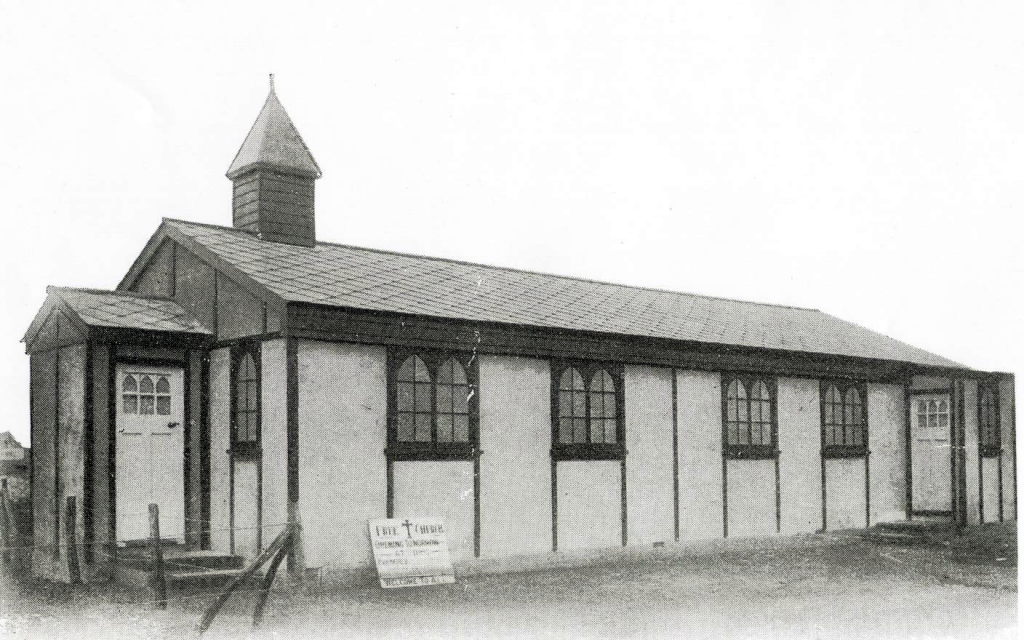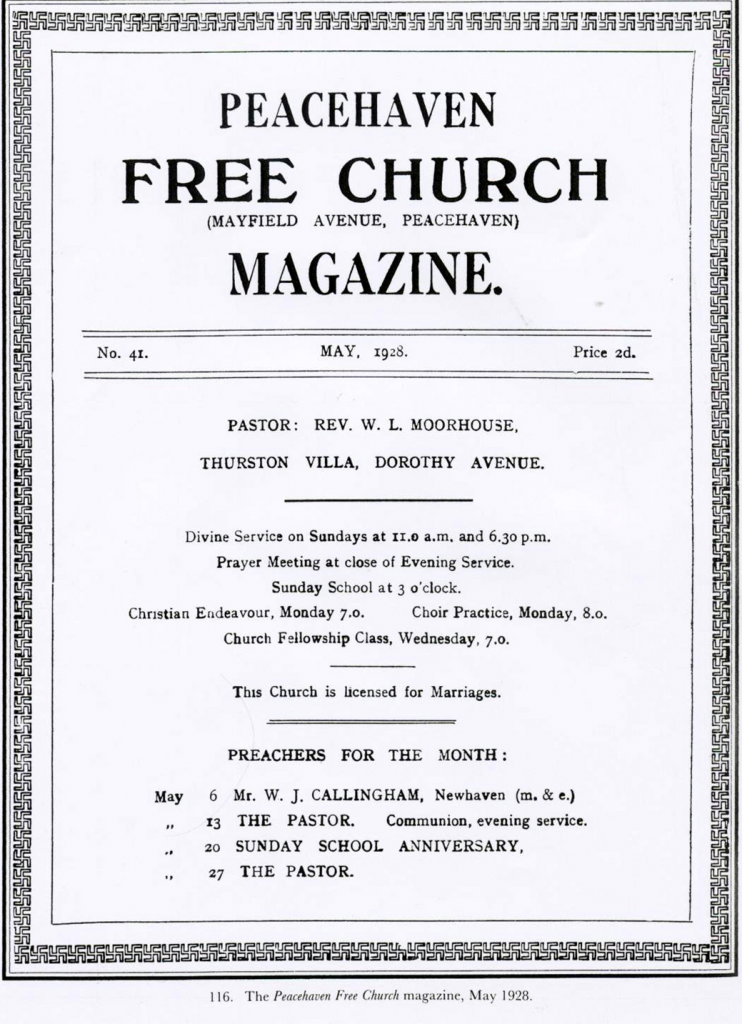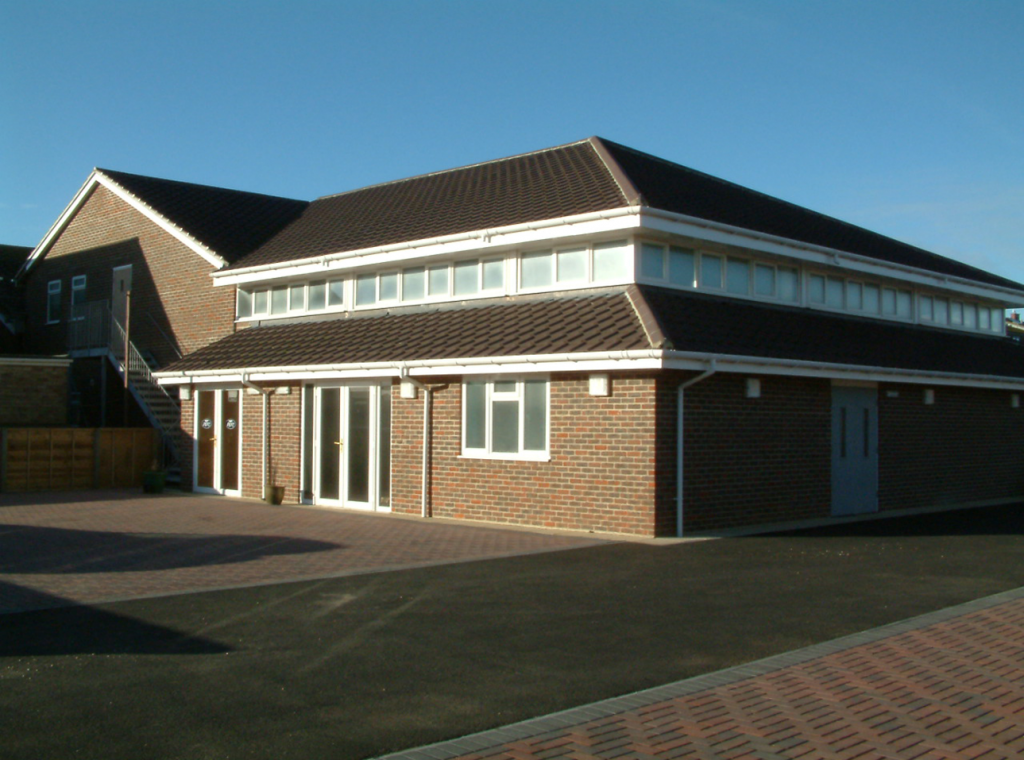History of The Church
Established in 1922, Peacehaven Evangelical Free Church, as it is known today, had it’s origins in open air meetings on the promenade in Joslin’s Pit near Seaview Avenue, which we understand has now disappeared due to coastal erosion.
A news item in Peacehaven Post (the local news sheet) of 1st July 1922 reads, “On Whit Monday the Friars Bay and Peacehaven Sunday School (affiliated to Newhaven Wesleyan Sunday School) celebrated its 8th Anniversary. A service was held in Joslin’s Pit when the Rev. Wm. Humphrey of Brighton gave interesting addresses to both children and adults.” The report concluded with, “Until a permanent place of worship can be obtained services are being held each Sunday evening at Mr James’ bungalow in Southdown Ave; all are invited.”
Land for the church was sold to three trustees by a Mrs A Parker for £100.00. Mr Parker, who kept the Post Office near the church, was one of the three trustees and was active in the church’s beginnings.
The actual building started life as an accommodation hut for troops during the Great War and was sited on Seaford Head. After the war it was purchased from the then War Department and brought to Peacehaven. An advertisement in the Peacehaven Post of 1st September 1922 describes the Free Church as “our first Church” as it was the first church building to be erected in Peacehaven, but only by a couple of months. The Baptist Church was already meeting in Glynn Road and the Vicar of Telscombe had been conducting open air services in June 1922. The building was officially opened on the 29th October 1922.

The Original Church Opening

At that time Peacehaven was no more than a few scattered dwellings and the only finished road was the South Coast Road; all the rest were tracks. The original church was built of asbestos, in keeping with much of the construction in Peacehaven in those days. It was not bricked round until the early 1960’s.
There are a few other mentions of the Free Church, such as when it was connected to the water main on the 22nd September 1923 and “Mary Wagstaff marries in the New Free Church” (from Peacehaven: A Chronology by Tony Payne & Stanley Bernard) Other references to Peacehaven Free Church are to be found in Bob Poplett’s book, ‘Peacehaven: A Pictorial History’.
From the early days, the church published a magazine and a cover from a 1928 issue is shown. The church newsletter remains a regular publication to this day.
Church Magazine of 1928
Chris Clapinson, who is still a member of the church, recalls attending the Sunday School in the early 1950’s. She said, “In those days it was held on a Sunday afternoon. Mr Boon, who lived in Firle Road, was the Sunday School Superintendent. The room was quite full so there must have been about 50 children. For the first part of the session we sat in the pews and sang choruses. Then we split up into 6 or more groups, according to age, for the Bible Story. Two of the teachers were a Miss Willingdon and Miss Locke.”
The present church building was opened on 5th March 1966. The Rev. WHP Goodchild was the pastor from January 1963 to August 1972. He was a builder by trade and, we understand, it was his vision to build the new church. He wrote in The Messenger, the church news letter of the day: “This building is of God and we are building for the future, in that the church will meet the needs of a growing community and we shall look back and praise God for the vision that prompted our sacrifice and effort today” (June 1965). A fund raising campaign was launched with an estimated total of £12,000 needed to complete the works. Presumably that sum was raised as the church now stands as a testament to his faith and commitment. The new building was officially opened on 5th March 1966 and the service was attended by some 500 local people.


Folk attending the opening in 1966
The original building was taken into use as a church hall and remained in service until 2002, by which time it had deteriorated so much that it was deemed unsafe. Its demise, and the urgent need for replacement, prompted the latest development of the church’s real estate.
The church of today
A new church hall had long been the vision of Peacehaven Evangelical Free Church as a fellowship, and of one man in particular, Mr Alec Philp, to build a facility to the glory of God, that would provide a focus in the community. Plans were drawn up, debated, modified and sent for planning approval. There were some local objections and at the planning meeting the Chief Planning Officer recommended refusal. Hopes were dashed! But one of the board members saw the merits of the application and spoke in support of it, and that seemed to set others to reconsider, Slowly the debate gained momentum and, against all odds, approval was granted by a majority vote. It was obvious that the Lord’s hand was at work and that He wanted the development to proceed.

Initial estimates set the costs at some £270,000 and, of course, the church had nothing like that amount available. However, in faith and total trust in the Lord, the project was started. Fund raising began in earnest and continued throughout the project. Gifts from within the fellowship, corporate grants, legacies, loans and fund raising activities within the church all contributed to the coffers. Cash flow was a problem throughout but, whenever a bill was due to be paid, the money appeared from somewhere, often at the eleventh hour. Divine intervention? – Undoubtedly! Never was progress halted for finances.
Once the decision was made by the membership to proceed Alec Philp took on the mantle of project manager, site manager, quantity surveyor, buyer, health & safety manager, builder and labourer all rolled into one. He worked tirelessly, full time and unpaid for almost 5 years, as a labour of love for the Lord.
Almost from the outset the inevitable problems arose. A ground survey revealed unstable land which demanded pilings be driven deep into the ground to support the reinforced foundations; a cost that hadn’t been allowed for.
Reinforcement of the foundations
This and all the other difficulties that arose during construction, such as design anomalies, access constraints, materials handling, et al, were overcome and, slowly, the building developed and came alive. Completion took almost 5 years and the rooms were brought into use as each became available.



